|
Elham
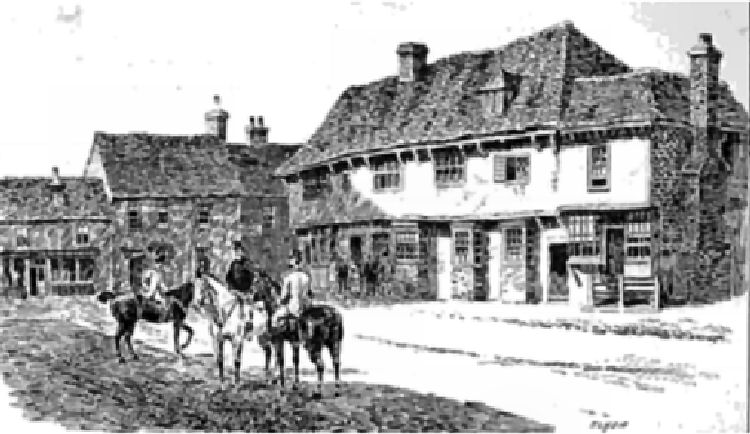
Above engraving circa 1815, kindly sent by Rory Kehoe. |
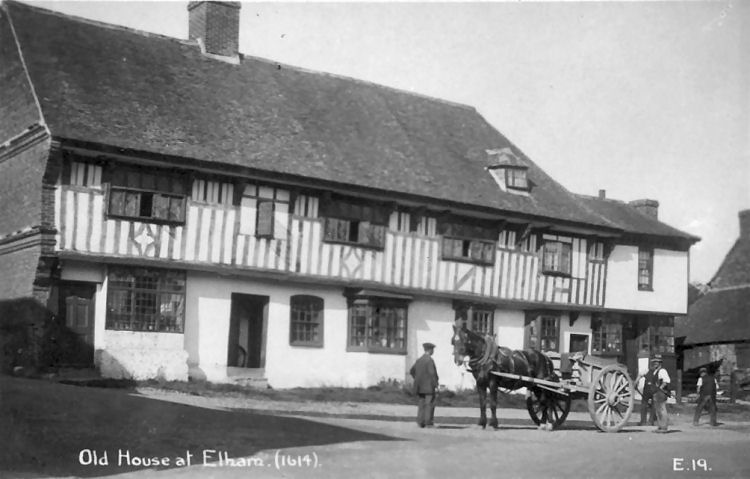
Above postcard, circa 1919. Kindly sent by Mark Jennings. |
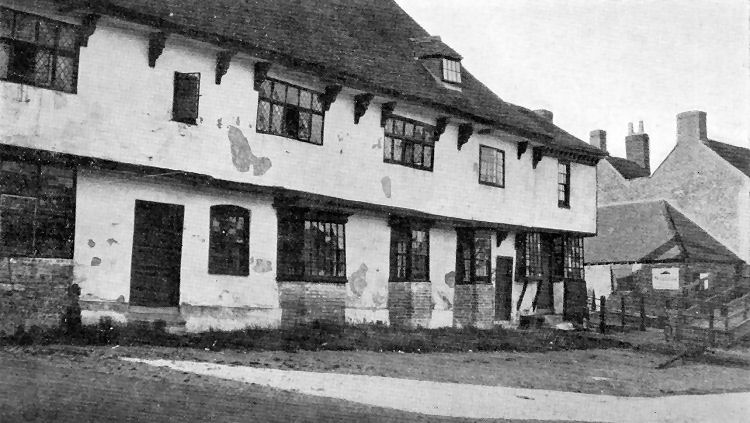
Above photo, circa 1925. |
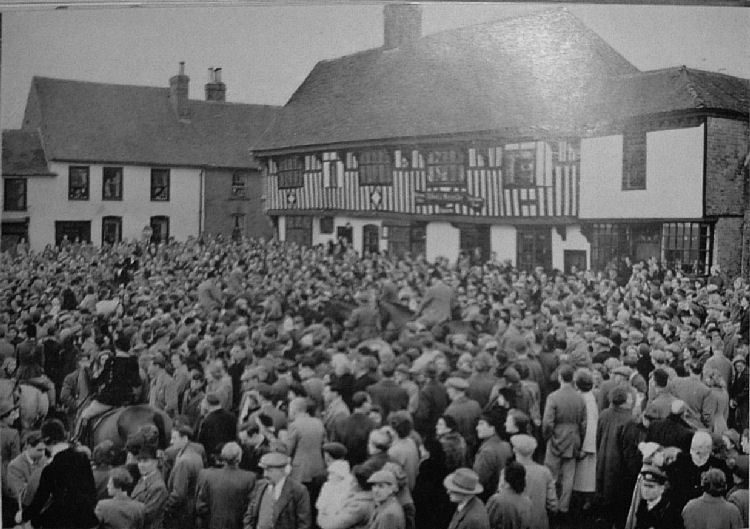
The above picture shows the East Kent Hunt outside the
Smithie's Arms. Date unknown.
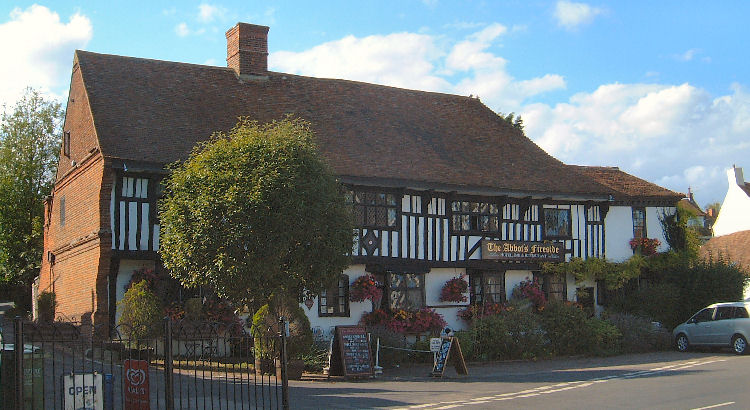
Above photographs by Paul Skelton, 22 Aug 2008. |
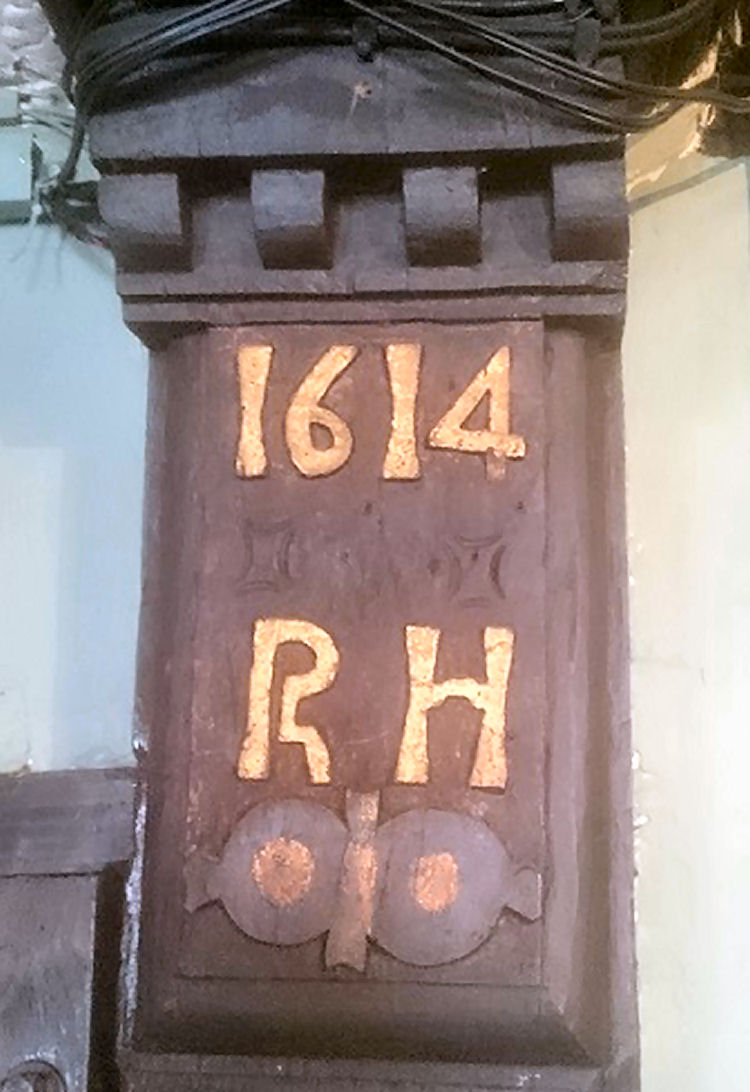
Above photo showing the mantelpiece panel referring to Richard Hayes. Kindly sent by Rory Kehoe 2019. |
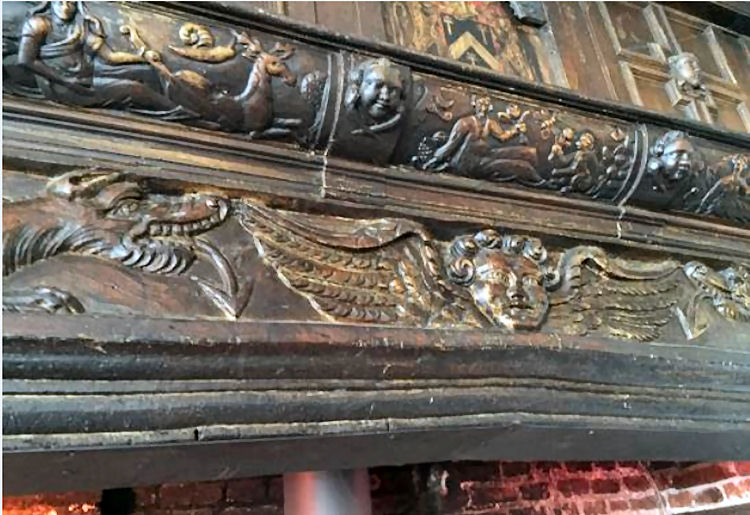
Above photo showing carving on fireplace. |
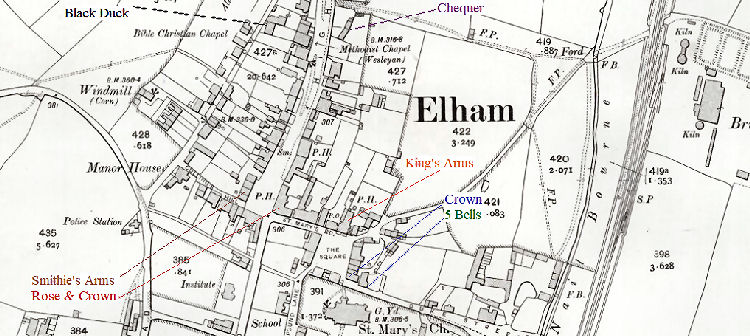
Elham O.S. Map 1896. |
The Smithies Arms was built as an Inn in 1451 and contains the 15th and
16th century features. It is now called the "Abbot's Fireside" and is a Tudor
style hotel. I am unsure yet as to when the name changed.
The Abbot's Fireside, now contains six bedrooms that are all named after
the well known or local persons related to the history such as the Duke of
Wellington and King Charles II.
Legend has it that the Duke of Wellington was based here before the
Battle of Waterloo and King Charles II hid from Roundheads in a ‘priesthole'
within the main fireplace. An underground tunnel runs from the cellar to the
church and manor house and there is a 16th Century wall painting in an
upstairs corridor.
It still featuring a huge medieval fireplace, and antique furniture,
original leaded windows and heavy beams throughout the lounge, the
restaurant and all the bedrooms.
The Old Inns of Kent by D C Maynard - 1924, describes a carved Stuart
mantelpiece panel, on which is painted "Richard Hayes, The "Smithers Arms,"
1614.
Apparently, as Elham Market declined during the 18th century, so did the
village's pubs, which is why the "Five
Bells" and "Crown"
closed c.1800. The Smithie's Arms was sold in 1671 (very heavily mortgaged)
and some time after, the pub was closed and converted into 4 cottages. This
remained the case until 1939 when the pub was re-opened.
During WW2 the pub provided refreshments for British and later, American,
troops, especially in the lead up to D-Day.
More details and pictures hopefully to follow.
|
From an excerpt from The Old Inns of Kent, by D C Maynard, 1925.
THE OLD INNS OF KENT.
Stuart times is proved by an old mantelpiece inside one of the
cottages, which contains a panel on which is painted the following
inscription: " Richard Hayes, The Smithers Arms, 1614.” This mantel
is a wonderful piece of carved oak. In the centre is an angel, and
on either side are mythological beasts of grotesque design,
characteristic of Gothic decoration. One panel portrays Jonah
escaping from the mouth of a whale, while various Scriptural
subjects adorn the other. Externally the building is a most
fascinating example of pre-Renaissance work. The carving of the
brackets which support the roof is very rich and varied.
Unfortunately, they are so close to the roof that it is impossible
to study the details from the ground. The projecting ground-floor
bays and windows irregularly spaced effectively break up what would
otherwise appear a long, uninteresting front. The first-floor
windows, which probably date from the time when the inn was built,
are filled with diagonal leaded panes, and divided by vertical and
horizontal timbers known as mullions and transomes. This building is
quite unique of its kind, and it is a pity these houses have been
allowed to get into a state of disrepair. The plaster is peeling
from the walls, and gives the whole a poverty-stricken look.
|
|
From the
https://www.kentonline.co.uk By Phil Hayes, 11 February 2021.
History of Abbot's Fireside pub in Elham and its links to King
Charles II and D-Day troops.
From hiding a king, to serving D-Day troops, this Kent pub has links
to key moments in British history...
The Abbot’s Fireside in Elham, near Canterbury, which is due to
reopen following a refurbishment when Covid restrictions are lifted,
dates back hundreds of years.
It was originally built as an inn called the Smithie’s Arms in 1451.
The pub still retains features from the 15th and 16th centuries -
including a huge medieval fireplace.
There is also a carved Stuart mantelpiece panel, on which is
painted: “Richard Hayes, The Smithers Arms”.
Legend has it that King Charles II hid from the Roundheads in a
“priesthole” within the main fireplace.
An underground tunnel is said to run from the pub’s cellar to the
village’s church and manor house.
The Duke of Wellington is also reported to have been based here
before the Battle of Waterloo in 1815.
The Smithie’s Arms was sold in 1671 and some time after was
converted into four cottages. This remained the case until the
tavern was re-opened in 1939.
A few years later, British and US troops gearing up for D-Day
enjoyed refreshments at the pub.
At some point before 1965, the inn’s name was changed to the Abbot’s
Fireside.
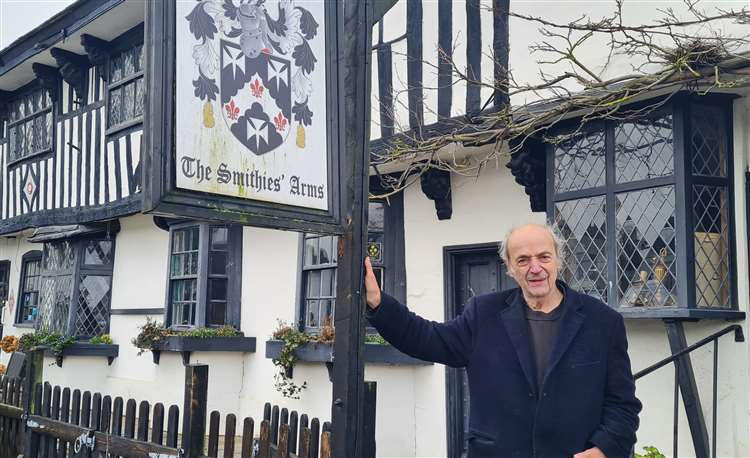
Peter Malkin outside the Abbot's Fireside at Elham.
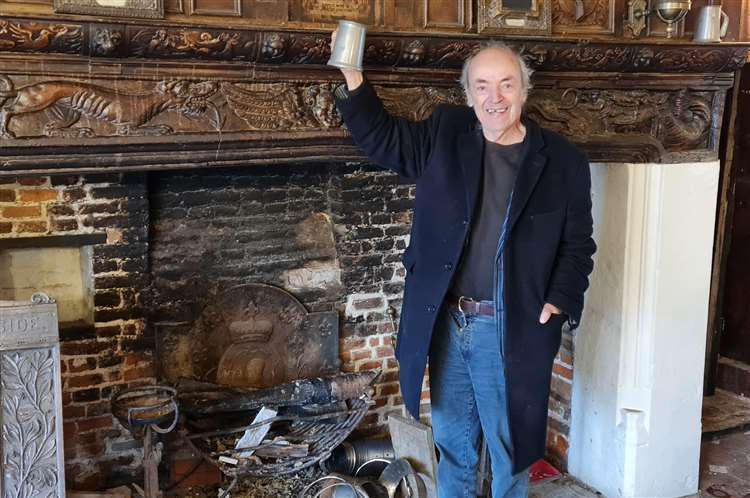
Peter Malkin has removed the wood burner to bring back the original inglenook fireplace.
Over the past decade the pub has changed hands several times and was
put on the market in 2019 when its owners announced plans to retire.
Now millionaire businessman Peter Malkin, who ran "Bridge Country
Club," is hoping to give it a new lease of life once it can finally
welcome back punters later this year. |
LICENSEE LIST
HAYES Richard 1614+
|









